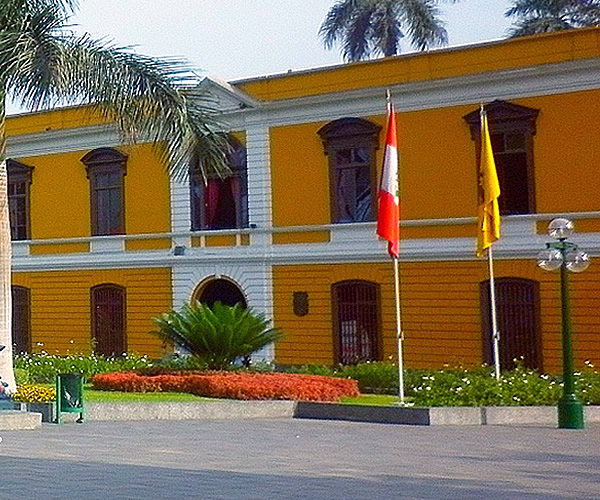
Back in 1996, Peruvian government established education reforms that extended free and compulsory school education to all students between 5 and 16 years old, known as educación básica (primary education) and educación técnica (technical education). Since then, literacy rate is up to 94.2%
A 2008 ministerial decree also mandated that both public and private schools sectors had to follow the same national curriculum guidelines, which is set at the federal level and overseen by local education authorities.
The academic school year starts at the beginning of March and runs through to November/ December. Spanish is the language used at schools, although in some regional primary schools, Aymara or Quechua (also official languages in Perú) are the language of instruction with Spanish offered as a second language.
Elementary and Secondary School education in Perú
Education is compulsory from age five. Having completed primary education at the age of twelve, children then move on to secondary education. Here's an overview of all levels:
Compulsory:
- Pre-school education (educación inicial) begins at the age of 5 and it lasts for 1 year
- Primary school (educación primaria) is for ages 6-12 and it lasts for 6 years.
- Secondary school (educación secundaria) is for ages 12-16 and it last for 5 years.
- General secondary education is 2 years in duration
Primary Education
Primary and secondary school Education in Perú is free for all children from ages 7 to 16. However, it is inaccessible to many rural children.
During this period of time, students acquire general knowledge in subjects such as science, mathematics and language. The student must obtain a minimum score of 11 points (out of 20) to pass Language and Mathematics tests.
Secondary Education
Secondary school in Peru consists of 5 grades and is divided into two cycles:
- First cycle - General for all students. It lasts for two years and constitutes the bulk of compulsory education.
- Second cycle - A diversified course with scientific, humanistic and technical options. It is three years.
Private Schools vs Informal Private Schools in Lima
When looking for a private school in Lima or Perú, you should be very carefully with the actual high heterogeneity of the private offer. Although there are high-quality private schools that have higher tuition, informal and cheaper private schools are also offered. Many times, this variability within the private sector is overlooked when analysing sector averages.
Informal private schools are those that provide an educational service without the Ministry of Education authorization. There are several types of informal schools:
- Those that do not have any type of authorization
- Those that only have authorization for some level of education. For example, they have authorization for primary but not for secondary
- Those that rent or borrow authorization codes from schools that are formal. When this happens, the student receives the certificate from the school that is authorized, but not from the one in which he completed his basic education.
As a result, students won't be able to access the official study certificate authorized by the Ministry of Education once they are finished with their studies. This prevents them from moving to another school, accessing higher education and entering the labour market.
In order to combat informality and ensure the quality of the educational service, the Ministry of Education (Minedu) offers parents the Identicole web platform so they can verify if the school is registered and has authorization to develop their activities. By entering the web address, parents can find public schools and authorized private schools registration, according to its location, the cost of the monthly pension, its tuition, some other payment if there was one and the number of students per classroom.
See the complete list of both private and public schools in Lima in this link.
Universities in Lima
Since their founding, Peruvian universities have been characterized by their Eurocentric character as a result of the relationships between the university and the power historically established: Church, State and Market.
However, in recent years, the Peruvian university system has presented significant reforms, and the search for quality in higher education has led to structural changes, the creation of supervisory bodies and institutional evaluations, among others.
Nowadays, Peru has both public and private universities. All of them must act in accordance with the "Law for Higher Education" framework and its highest governing body: the Superintendencia Nacional de Educación Superior (SUNEDU), which under the new law, it replaced the former "Council of Rectors".
The biggest and most awarded public universities in Lima are:
- Universidad Nacional Mayor de San Marcos
- Universidad Nacional de Ingeniería
- Universidad Nacional Agraria La Molina
- Universidad Nacional Federico Villarreal
- Universidad Nacional de Educación Enrique Guzmán y Valle
- Universidad Nacional José Faustino Sánchez Carrión
- Universidad Nacional Tecnológica de Lima
- Universidad Nacional de Barranca
- Universidad Nacional de Cañete
University Credit System in Perú
In Perú, there is no national system of academic credits as mentioned in University Law (in Spanish). There is no generalized application of academic credit among Latin American higher education institutions, although there is a relative uniformity in the criteria used in its definition and quantification by Latin American universities.Each university applies the academic credit in its own criteria.
Libraries in Lima
Libraries play an important community role in Peru. In Lima, the National Library belongs to the "Citizen Services and Document Management Office". It has a reading room and trained personnel to provide excellent service. Admission is free and includes WI-FI. The National Library is open to everyone and there are facilities for people with disabilities.
Non-members can also visit the library. However, visitors need to show their ID/Passport to borrow books or use the Internet or public devices. To access the general inventory of the Library click here.
Lima's National Library
- Address: Av. De la Poesía 160, San Borja – Lima
- Tel: (511) 513-6900
- Open from Monday to Friday - 8:30 a.m to 6:00 p.m.
For further information contact: saladelectura@cultura.gob.pe or visit other National Library facilities.
Update 7/05/2019

Babbel is an international success with millions of active subscribers and ranked as the world's #1 innovative company in education.
Why Babbel?
Learn and review on your own schedule: Mobile, tablet or desktop compatible, with lessons about 10-15 min.
Expert-made courses: Learn the basics or focus on topics like travel, culture, or business.
Start speaking right away: Learn to speak a new language naturally and conversationally.
Every learner is different: Each course is based on your native language and personal interests.
Remember everything: Babbel employs proven cognitive techniques that move new vocab to your long-term memory.
Refine your pronunciation: Practise speaking and improve your pronunciation with speech recognition technology.
Try Babbel for free today
Registration with Babbel is completely free of charge and the first lesson in every course is FREE to try (Depending on the language you choose, that's 30-80 free lessons!).
If you want full access to Babbel's courses, simply choose a subscription that works best for you. Buy with confidence: 20-day money back guarantee!
